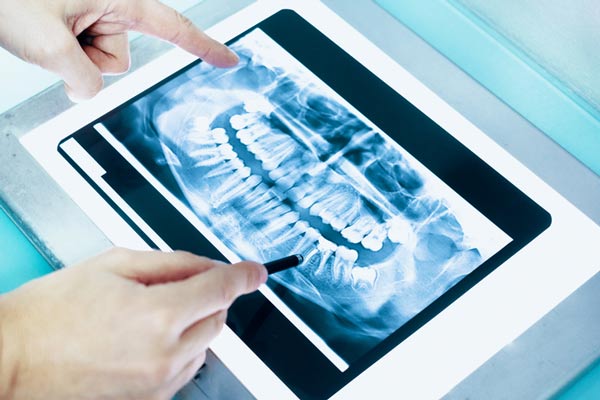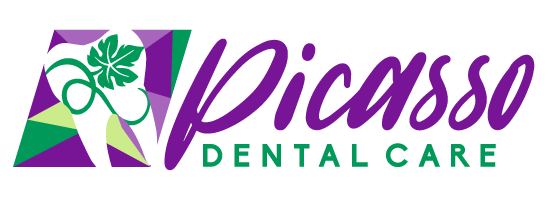Digital X Ray
Temecula, CA
Digital X Ray provided by Dr. Vinh Le
and Dr. Quang Le
in Temecula, CA at Picasso Dental Care
 Digital X-rays, a cornerstone of modern dentistry, offer a safe and effective way to diagnose and treat dental problems. This guide dives deep into digital radiography, exploring their advantages over traditional X-rays, addressing safety concerns, and highlighting their role alongside other dental technologies. Digital X-rays, a cornerstone of modern dentistry, offer a safe and effective way to diagnose and treat dental problems. This guide dives deep into digital radiography, exploring their advantages over traditional X-rays, addressing safety concerns, and highlighting their role alongside other dental technologies.
We recommend that you have a digital X-rays at Picasso Dental Care along with your regular dental checkup.
What Are Digital X-Rays?
Unlike traditional X-rays that use films, digital X-rays, also known as digital radiography, employ digital sensors to capture images. This eliminates the need for film development and allows immediate viewing of the image on a computer screen within seconds. It is a new technology that people are embracing at a high rate. It is innovative and efficient. Hence, many people prefer it over other traditional X-rays.
How Are Digital X-Rays Different From Traditional X-Rays?
Despite the established role of traditional X-rays in healthcare for many years, digital X-rays have emerged as the preferred method for many providers. This shift is driven by several key differences between the two technologies.
First, digital X-rays significantly reduce radiation exposure for patients. This is achieved by requiring fewer images due to the superior image quality of digital sensors. Traditional X-rays, which rely on film, often require multiple takes, leading to higher radiation exposure.
Second, digital X-rays offer a significant advantage in terms of processing times. Unlike traditional X-rays that require film development, digital images are captured and displayed almost instantly, allowing for quicker diagnoses and treatment decisions.
Furthermore, digital X-rays offer greater convenience in terms of storage and manipulation. Traditional X-rays require the physical storage of films, which can be cumbersome and susceptible to damage. In contrast, a digital image can be easily stored electronically, taking up less space and facilitating effortless sharing and transfer. Additionally, a digital image can be manipulated and enhanced on a computer, providing greater flexibility for analysis.
Finally, digital X-rays boast a clear environmental advantage. Traditional film processing involves harmful chemicals, contributing to environmental pollution. Digital X-rays eliminate this concern, as they require no film or chemicals for processing, making them a more eco-friendly choice.
Are Dental X-Rays Safe?
Dental X-rays, despite using radiation, involve minimal levels that are considered safe for both children and adults. The risk of exposure is further reduced if your dentist utilizes digital X-ray instead of traditional film-based methods.
Furthermore, your dentist will take steps to minimize any potential risks by using a lead apron to shield your vital organs, such as your chest, abdomen, and pelvis, from unnecessary radiation. In some cases, particularly for children, women of childbearing age, or individuals with thyroid conditions, a thyroid collar may also be used for additional protection.
Can You Get Dental X-Rays While Pregnant?
While dental X-rays involve minimal radiation, the American Dental Association and the American Pregnancy Association ensure these levels are safe for pregnant women and their developing babies. For additional reassurance, dentists utilize lead aprons to shield vital organs during the X-ray procedure. This extra layer of protection further minimizes any potential risks associated with the minimal radiation exposure.
During dental digital radiography, the lead apron you wear shields your entire abdomen, ensuring the baby is protected. While it might feel cumbersome for such a brief procedure, it is essential to prioritize safety in this case. The apron, although heavy, is entirely safe to wear at any stage of pregnancy and will likely only be on you for a few minutes at most.
While dental X-rays are considered safe during pregnancy, some women choose to minimize their exposure to X-rays and other procedures as a precaution. It is essential to communicate your pregnancy to your dentist immediately. Together, you can create a personalized treatment plan that addresses your concerns and prioritizes your and the well-being of your baby. While not medically necessary, some women opt to delay X-rays until after the first trimester, which is a critical period of fetal development, for increased peace of mind.
How Often Do You Need Dental X-Rays?
The American Dental Association (ADA) recommends that the frequency of dental X-rays be determined based on your individual oral health needs. This is assessed through a comprehensive oral examination by your dentist using a digital image capture device.
The ADA suggests yearly X-rays for generally healthy adults to identify potential decay that might not be visible during a routine checkup. These annual X-rays typically focus on the areas most susceptible to cavities.
What Other Dental Technology Do You Use With Digital X-Rays?
3D imaging has revolutionized dentistry, offering a powerful tool for both diagnosis and treatment. Unlike traditional X-rays, which provide flat, two-dimensional images, 3D imaging creates detailed, three-dimensional models of the oral cavity. This allows dentists to diagnose issues more effectively. They can detect and visualize teeth, including un-emerged or malformed ones, evaluate jaw and facial structures, assess cleft palates, identify and analyze cavities, and diagnose dental problems like root canal infections and trauma.
It also helps plan treatments more precisely. With a clearer understanding of patient needs, dentists can plan and execute procedures like implant placement, bridge construction, denture creation, and inlay/onlay restorations with greater accuracy and predictability. These procedures address cosmetic concerns and improve quality of life by addressing missing teeth, misshapen teeth, and other issues.
Furthermore, the adoption of a digital image capture device extends beyond 3D imaging. Once bulky and offering limited image quality, intra-oral cameras have become smaller, more efficient, and cost-effective. These handheld wands allow dentists to view the inside of your mouth in real time with exceptional detail. This enables them to identify cracks, cavities, and other potential problems more effectively than relying solely on visual examinations, ultimately leading to better diagnosis and treatment outcomes.
In conclusion, digital X-rays have revolutionized dentistry, offering a safe, effective, and efficient way to diagnose and treat dental issues. By understanding the safety of digital X-rays, the recommended frequency based on your individual needs, and how they work alongside other dental technologies like 3D imaging and intra-oral cameras, you can feel empowered to make informed decisions about your dental care and maintain a healthy smile for years to come.
Get a Dental X Ray in Temecula, CA Today
We conduct digital X-rays at Picasso Dental Care. If you want to enquire more about our services, feel free to call us at (951) 383-2021, and we can schedule an appointment for you. |
